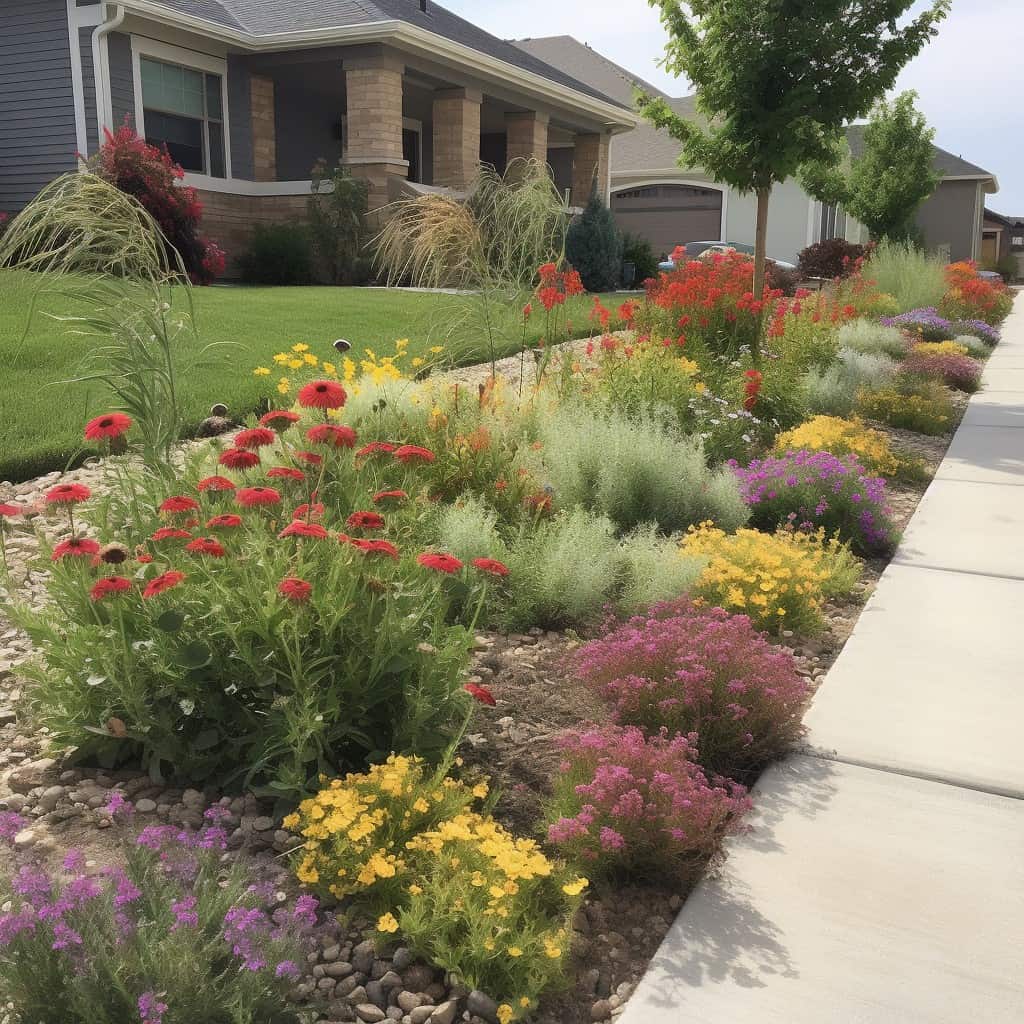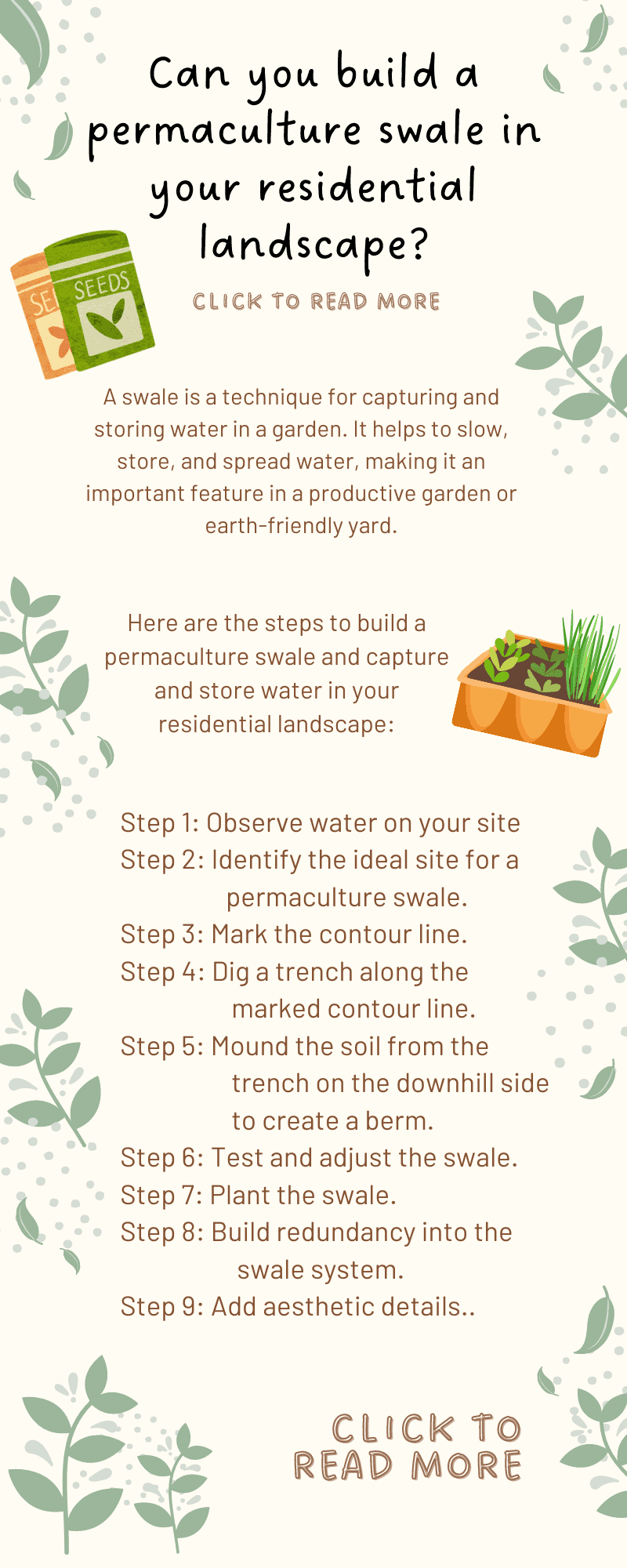
Here are the steps to build a permaculture swale and capture and store water in your residential landscape: identify the ideal site, mark the contour line, dig a trench, create a berm, test and adjust the swale, plant appropriate perennials, build redundancy, and add aesthetic details.
Learn how to build a permaculture swale in your residential landscape to capture and store water, reduce runoff, and create a low-maintenance, edible garden.
Are you looking to capture and store water in your residential landscape? Consider building a permaculture swale! In this guide, we’ll take you through the process of building a swale step-by-step.
First, let's define what a swale is. A swale is a technique for capturing and storing water in a garden. It helps to slow, store, and spread water, making it an important feature in a productive garden or earth-friendly yard.
Step 1: Observe water on your site. Start by identifying where water is wasted, observing drainage patterns, locating steep slopes, and determining annual rainfall. Passive observations like these can help you choose the right location for your swale.
Step 2: Identify the ideal site for a permaculture swale. A swale should be located 10 feet away from a building, 18 feet away from the edge of a steep slope or septic drain field, and uphill from a garden or low spot that doesn’t drain well. Make sure to perform an infiltration test to ensure that the site has an infiltration rate of at least 1 inch per hour.
Step 3: Mark the contour line. Mark the contour line every six feet using a contour level and utility flags.
Step 4: Dig a trench along the marked contour line. The typical trench depth is six inches to 1.5 feet deep, and the typical trench width is 18 inches to two feet wide. The length of the swale will vary based on your needs, the size of the space, and how much water you can catch.
Step 5: Mound the soil from the trench on the downhill side to create a berm.
Step 6: Test and adjust the swale. Use an A-frame level to check that the trench is level, and fix any uneven spots. Observe the swale during a heavy rain event to determine if it needs to be deeper, wider, or longer.
Step 7: Plant the swale. Consider planting perennials with thirsty roots to stabilize the system. In desert areas, plantings are typically placed in the swale trench to take full advantage of the rainfall before it evaporates. Meanwhile, in non-desert areas, it’s typical to plant the berm.
Step 8: Build redundancy into the swale system. Always consider where the water will go if the swale overflows and build redundancy that can handle a 100-year rain event.
Step 9: Add aesthetic details. Consider adding a walkable pathway, seeding with clover or grass, or adding a layer of mulch to reduce evaporation. Give the berm a pretty border, and you have a raised planting bed.

Swale maintenance is important to ensure that it continues to function properly. Observe your system and look for signs that the swale needs to be cleaned out, re-leveled, or adjusted in size.
With this guide, you can build a permaculture swale to capture and store water in your residential landscape.
Embed this infographic on your site.

